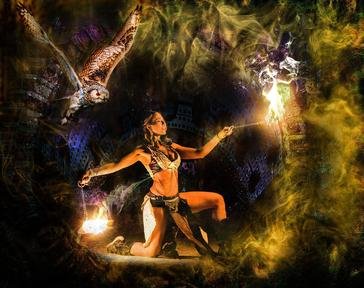Quiz Answer Key and Fun Facts
1. What's the term for a Polish lively round dance for eight couples?
2. What item of clothing was first worn by Italian dancer Virginie Zucchi in 1885 at the Imperial Theatre in St. Petersburg, Russia?
3. The name of this dance is from the German "to revolve".
4. In what year was the earliest known dance marathon held?
5. This stately court dance, popular in sixteenth-century Europe, was originally used to open ceremonial balls.
6. This Italian folk dance was said to be the result of a spider bite.
7. True or false: The fox-trot was named for someone named Fox.
8. In 1948, Perez Praole introduced this dance to the US from Cuba.
9. This fast jazz dance grew popular in the early 1940s.
10. Break dancing, popular in the 1980s, originated from where in the US?
Source: Author
bullymom
This quiz was reviewed by FunTrivia editor
coolupway before going online.
Any errors found in FunTrivia content are routinely corrected through our feedback system.
